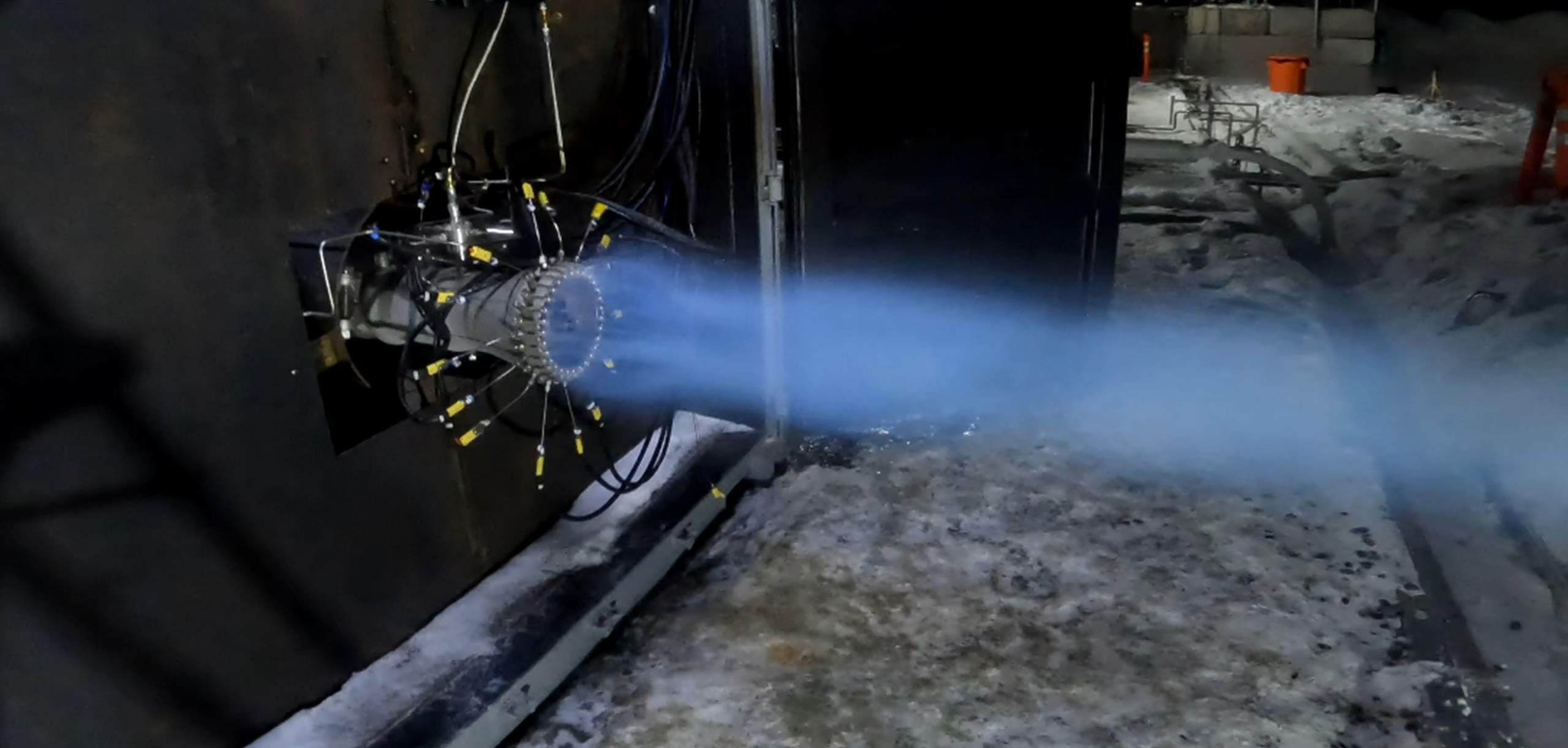
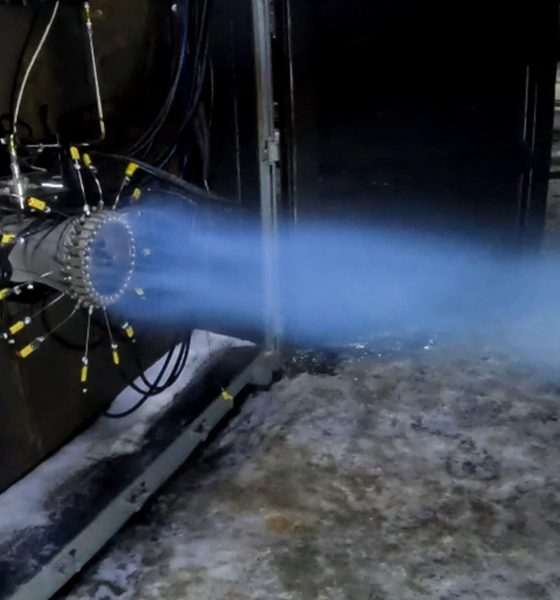
News
Stoke Space to build SpaceX Raptor engine’s first real competitor
Seattle startup Stoke Space has revealed plans to develop an efficient rocket engine similar to the Raptors that power SpaceX’s Starship.
Formed in October 2019, Stoke Space secured its first significant round of funding – $9.1 million – less than three years ago. At that time, CEO and co-founder Andy Lapsa says that the startup had just five employees, no permanent workspace, and a “barren field” for a test site. Within 18 months, Stoke Space had turned that empty field into an impressive test facility, conducted numerous component tests, and assembled its first full-scale rocket engine – an exotic UFO-like device unlike any seen before.
It also raised another $65 million – enough funding to begin earnestly developing a potentially revolutionary rocket capable of launching more than 1.65 tons (~3600 lb) into orbit for less than half a million dollars. To realize that extremely ambitious goal, Stoke Space has taken the even more ambitious step of attempting to make the first rocket it develops fully reusable. Simultaneously, the company has incorporated several exotic technologies into that rocket, recently culminating in a surprise announcement that it will attempt to develop one of the most difficult types of engines to power that rocket’s booster stage.
The update that's rolling out to the fleet makes full use of the front and rear steering travel to minimize turning circle. In this case a reduction of 1.6 feet just over the air— Wes (@wmorrill3) April 16, 2024
Full-flow staged combustion
At the end of an extended interview and tour with YouTuber Tim Dodd (The Everyday Astronaut), CEO Andy Lapsa revealed that Stoke Space has decided to build a full-flow staged combustion (FFSC) engine for the first stage of its reusable rocket. FFSC is the most efficient type of combustion cycle available for a chemical bipropellant rocket engine, but it’s also the most difficult to develop.
A full-flow engine attempts to squeeze every possible ounce of performance out of the propellant it consumes. The most powerful and efficient chemical rocket engines must consume huge volumes of propellant in a short amount of time without destroying the launch vehicle they’re attached to. To create pressure and spin the pumps that are needed to feed that propellant into their main combustion chamber, engines often burn a small amount of propellant in a separate gas generator or preburner. Gas-generator engines vent that exhaust overboard, reducing efficiency but making for a much simpler design. Staged-combustion engines use preburners to create gas that pumps liquid propellant, and that exhaust gas is eventually injected into the main combustion chamber.
Full-flow staged combustion sets itself apart by having two separate pumps and preburners for oxidizer and fuel. Unlike simpler variants of staged combustion, FFSC engines turn all of their propellant into gas before injecting it into the combustion chamber. That hot gas increases the heat of combustion and the pressure inside the combustion chamber, ensuring that virtually all of the propellant that flows through the engine is combusted and turned into thrust as efficiently as possible. FFSC is exceptionally difficult because of the extra-high temperatures and pressures it requires, as well as the need for an oxygen-rich preburner and pump. In a high-pressure, hot-oxygen environment, virtually anything imaginable – including most metals – will spontaneously combust.
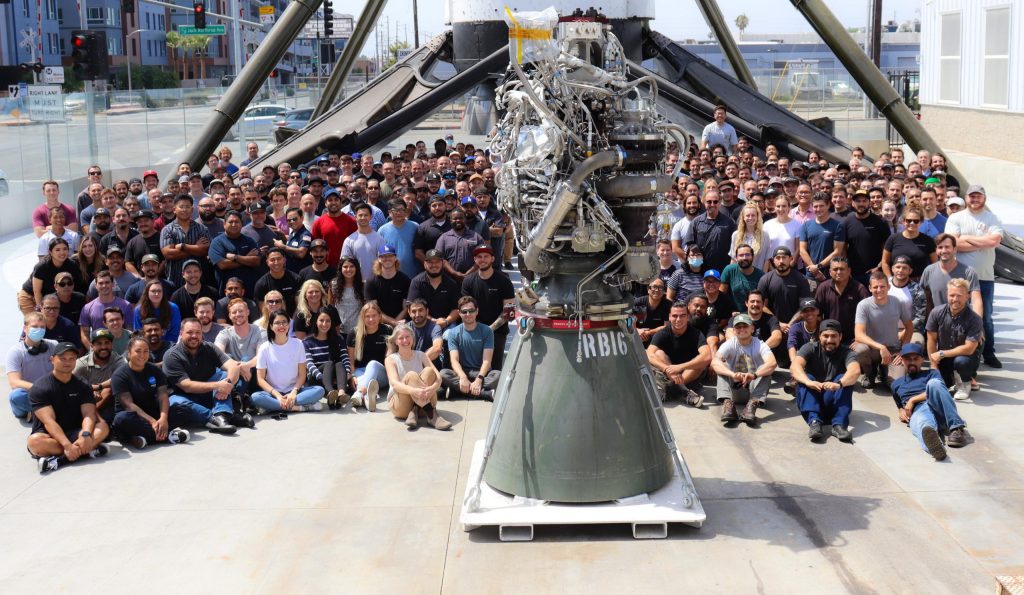
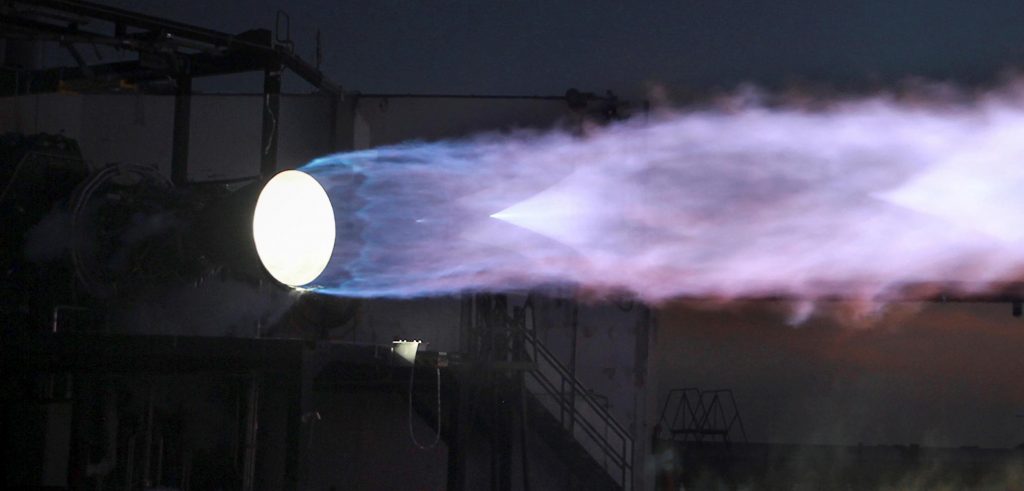
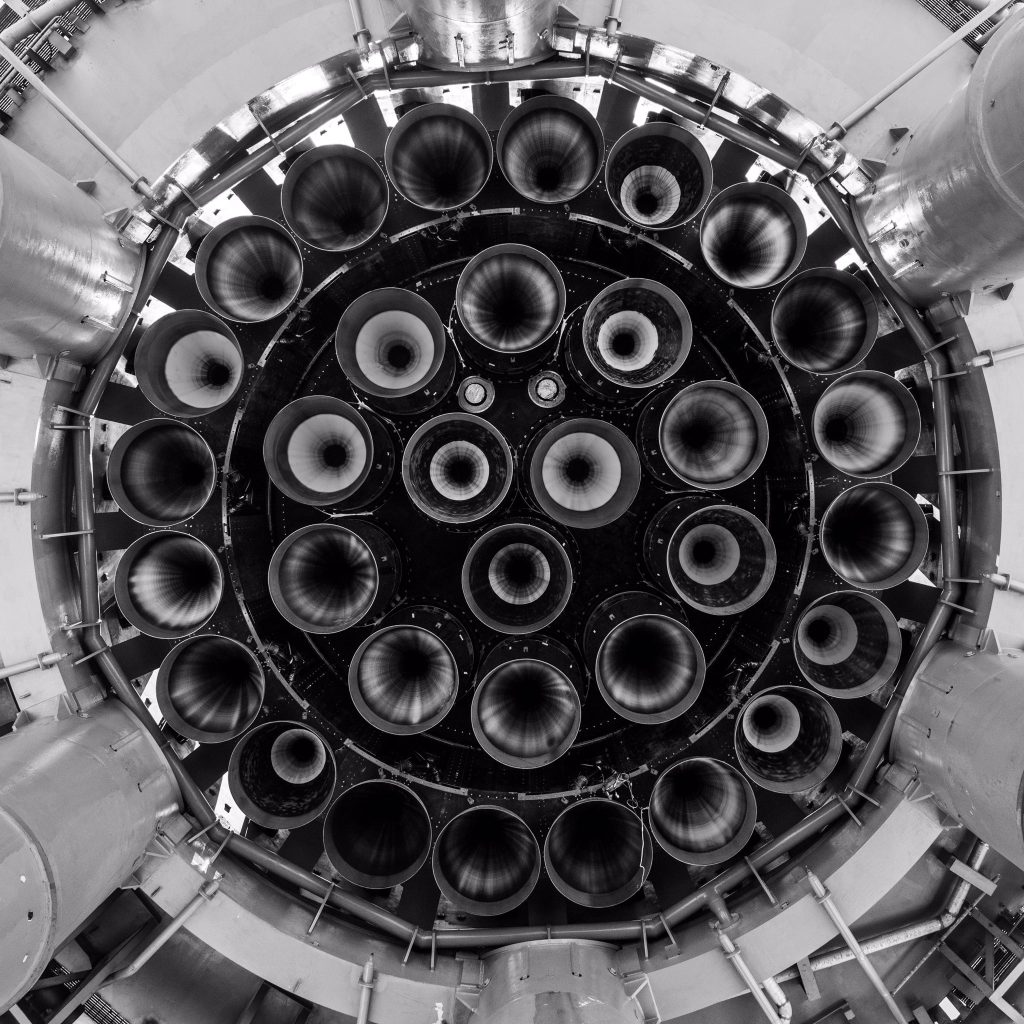

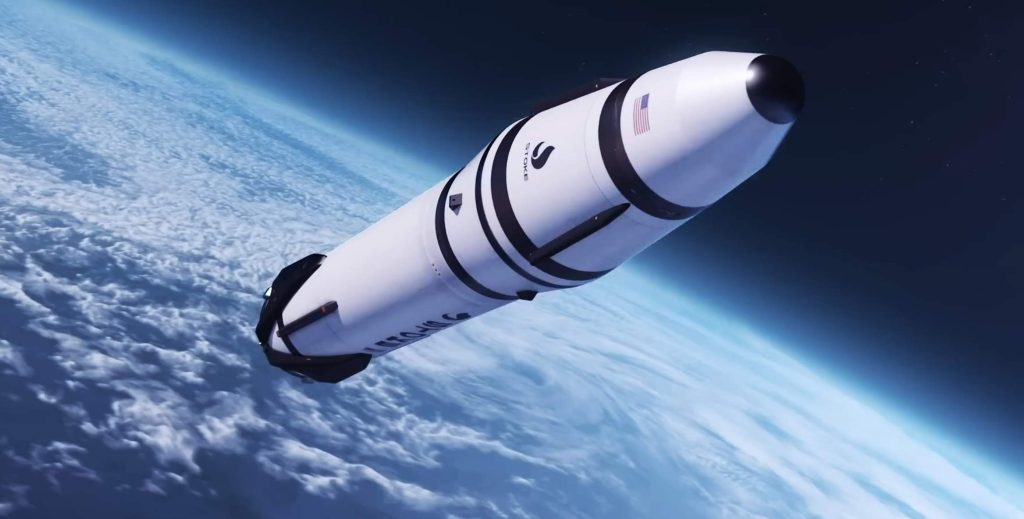
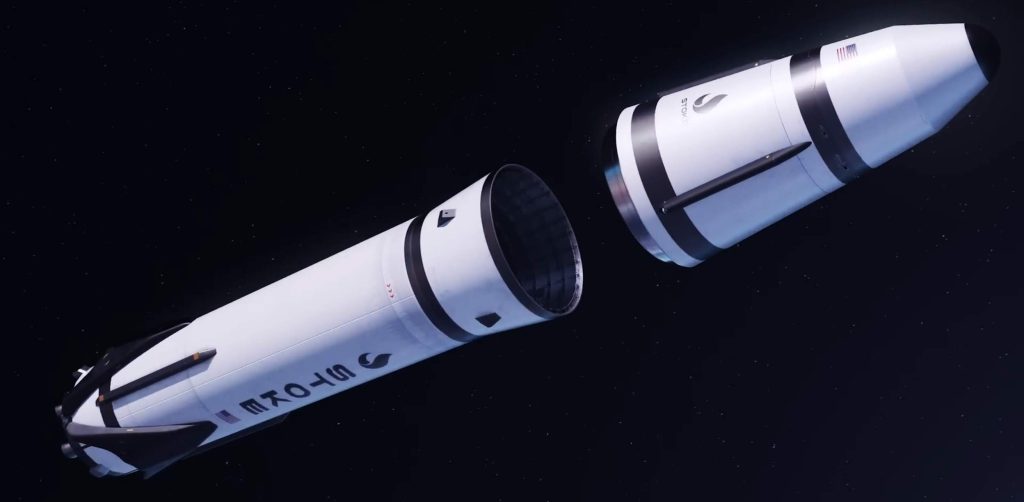
Only complex custom-designed alloys can survive those conditions. SpaceX’s Raptor, the only FFSC engine that has ever flown, is especially difficult because it’s meant to be highly reusable. To be successful, Raptor will have to survive those conditions dozens or even hundreds of times in a row with little to no maintenance in between.
The first booster engine Stoke Space ever attempts to build will be a reusable full-flow staged combustion engine powered by liquid methane and liquid oxygen – essentially a smaller version of SpaceX’s Raptor. Stoke’s booster is otherwise familiar and features deployable landing legs like SpaceX’s Falcon boosters. Lapsa says it will likely also have grid fins.
Reusing the upper stage
In some ways, the upper stage of Stoke’s first rocket is even more ambitious. Powered by hydrogen and oxygen propellant, Stoke has designed a conical capsule-like upper stage with an integral fairing. The upper stage’s propulsion is exotic and unique. A large pump will feed propellant to up to 30 combustion chambers distributed around the rim of its heat shield. The exhaust coming from those 30 chambers will expand and partially push against the upper stage’s equally exotic metallic, liquid-cooled heat shield. That expansion against the heat shield improves the efficiency of the upper stage and means that its engine will technically be an aerospike.
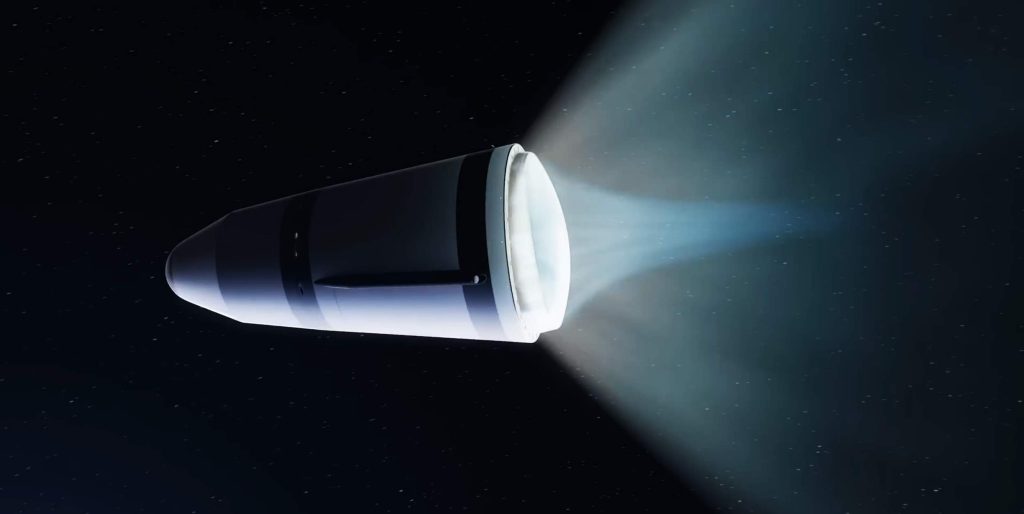
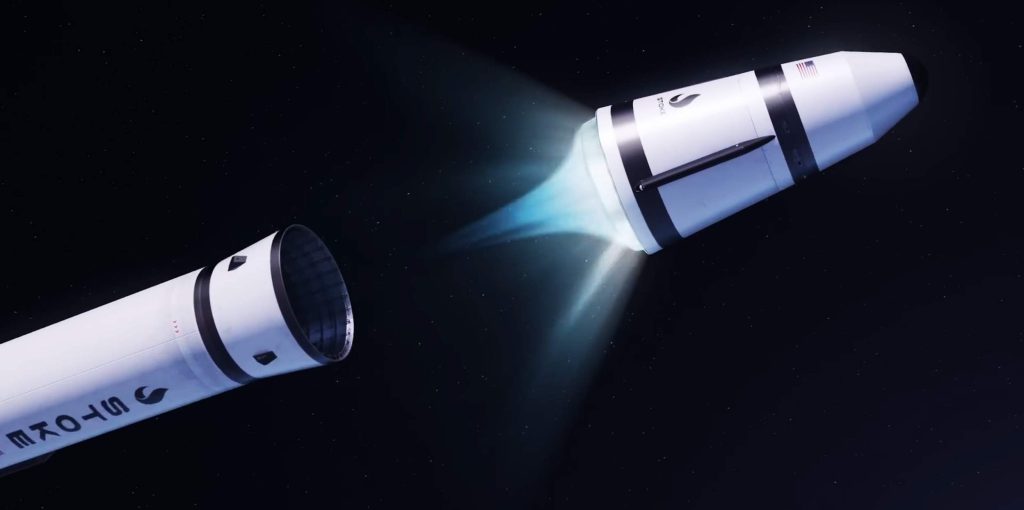
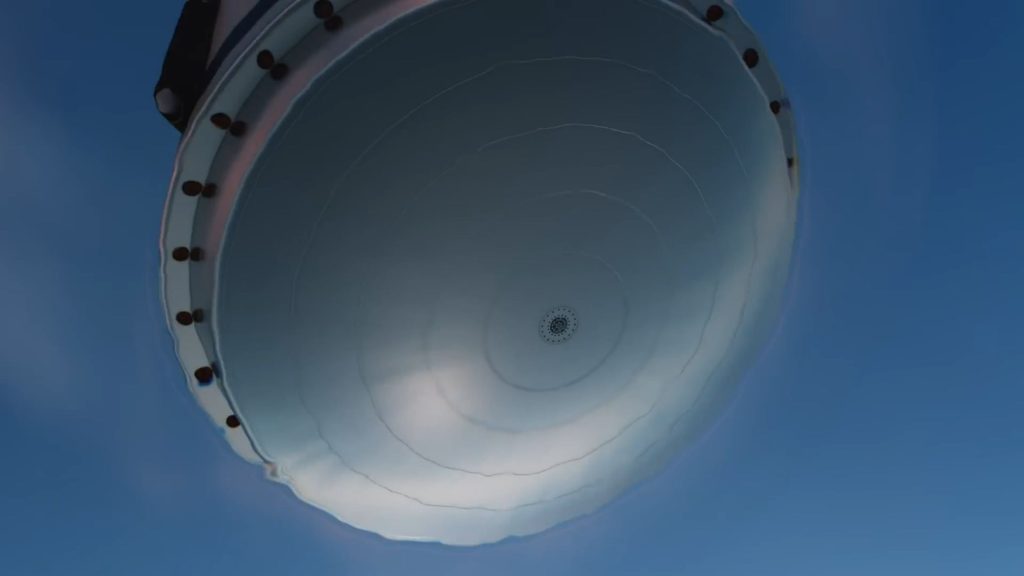
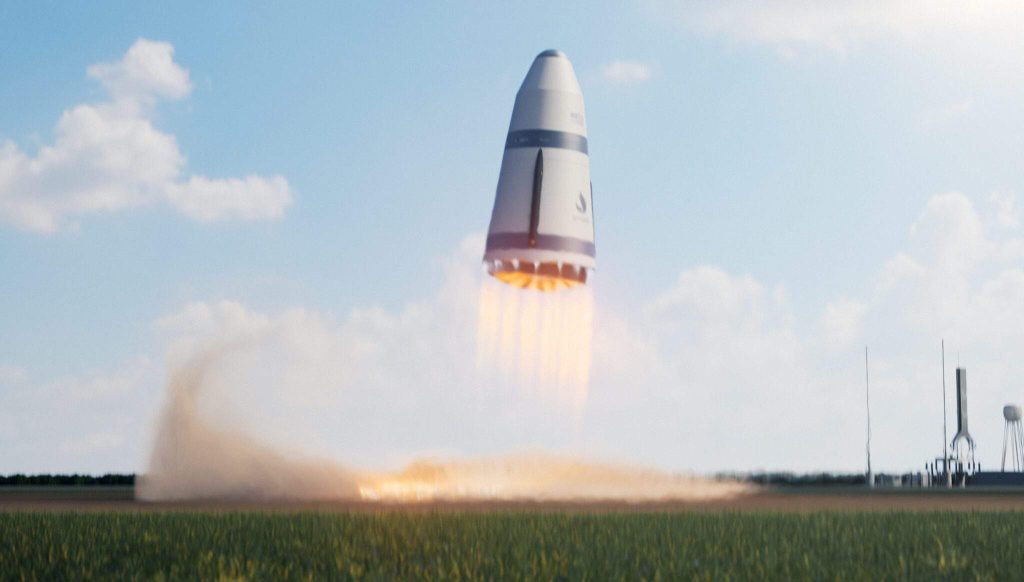
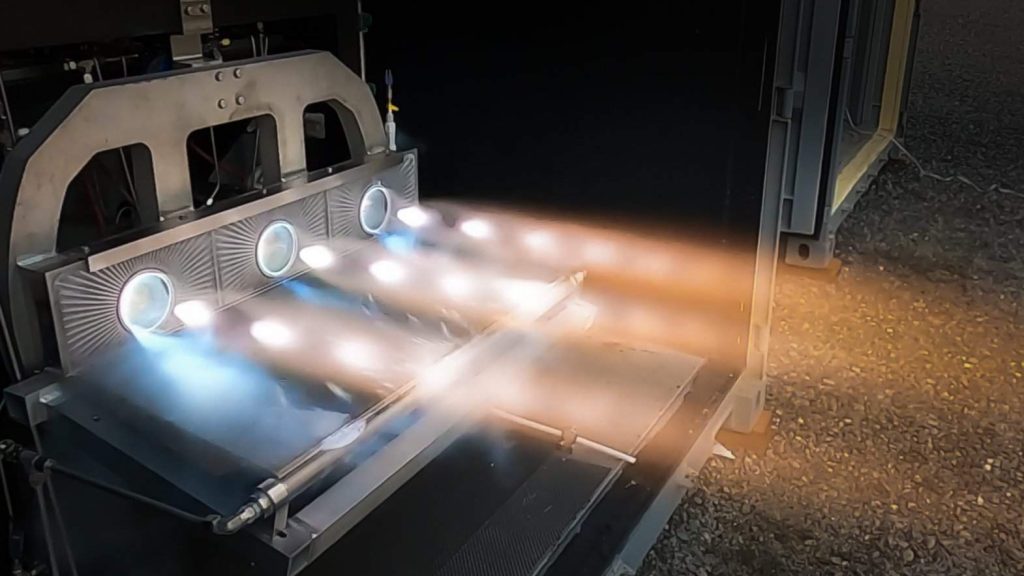
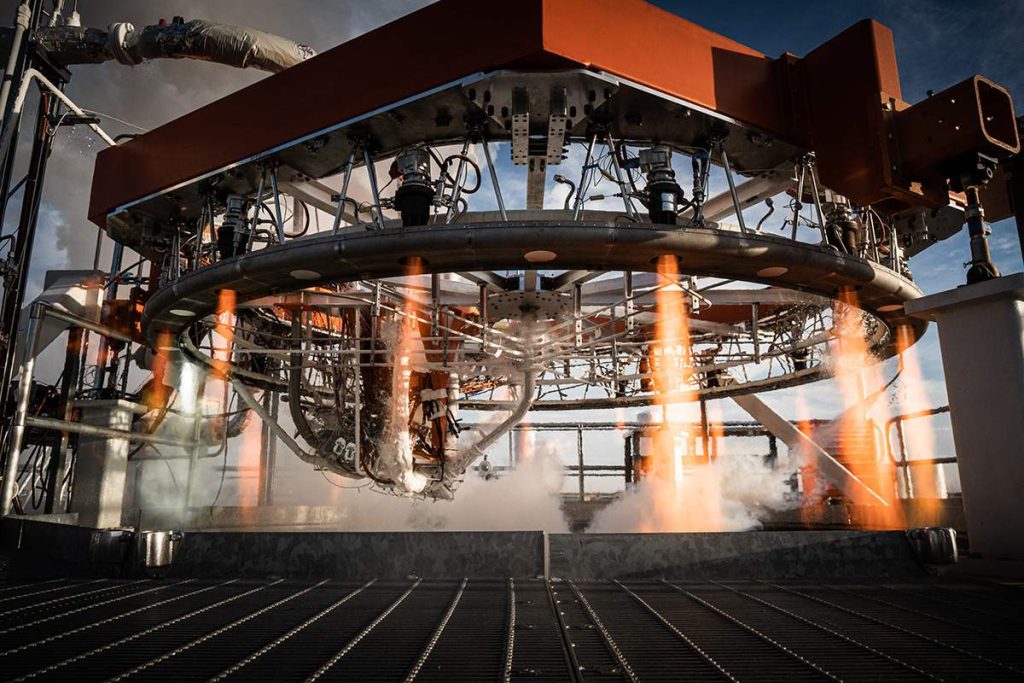
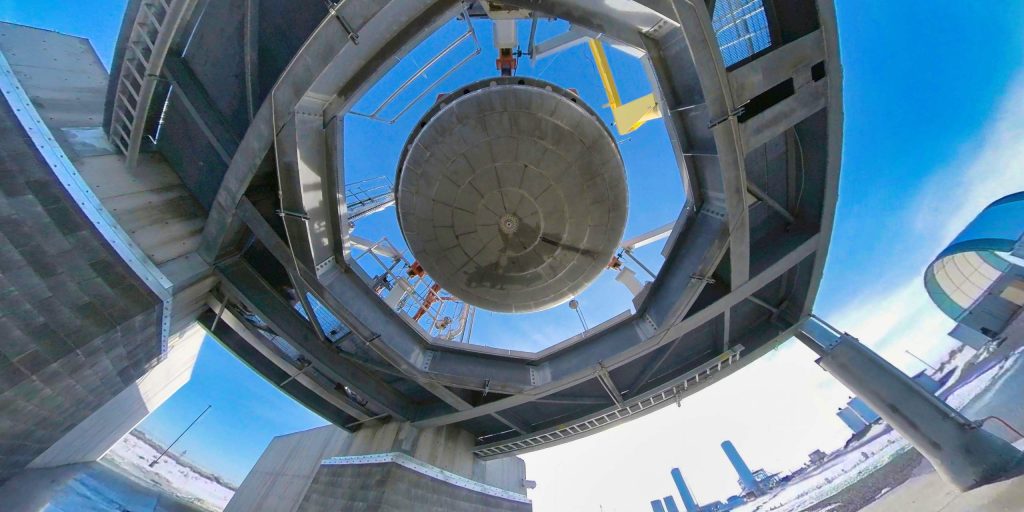
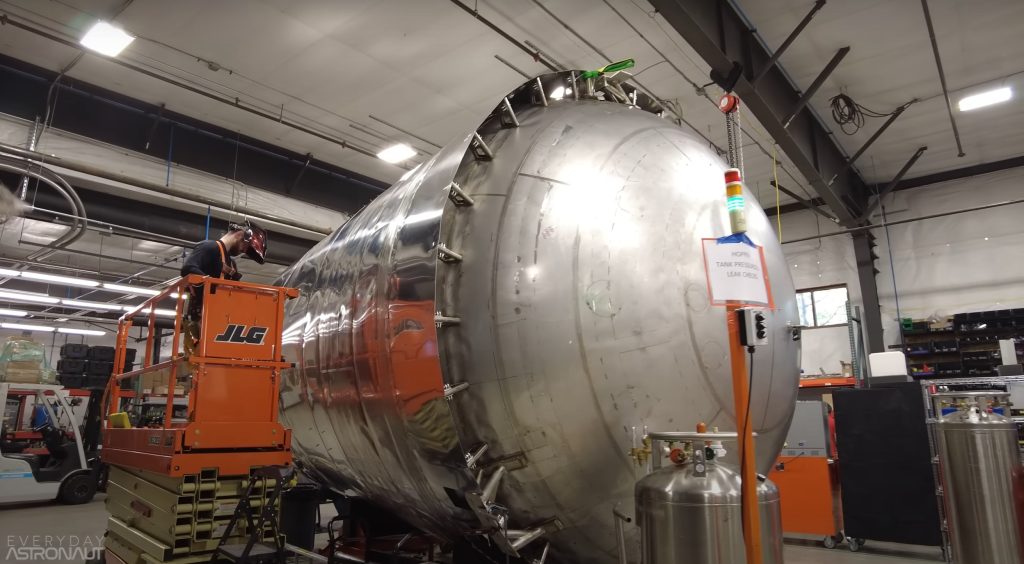
Stoke has already begun testing a full-scale version of the upper stage’s UFO-like rocket engine with 15 combustion chambers. Since testing began in the second half of 2022, Stoke has completed dozens of static fires. Everyday Astronaut’s tour also revealed that the startup has made significant progress fabricating and assembling its first full-scale upper stage prototype – tanks, nosecone, heat shield, engine, and all.
Reminiscent of SpaceX’s Grasshopper and Starhopper campaigns, Stoke plans to conduct hop tests with that prototype if it makes it through qualification testing. On February 7th, Stoke also revealed that it’s begun testing a crucial component of its full-flow booster engine. All told, Stoke Space is making progress at a remarkable pace and continues to tackle the hardest problems. The startup has also avoided widely publicizing any specific deadlines, instead choosing to let hardware and tangible results speak for themselves. Only time will tell if that approach pays off, but Stoke is off to an exceptionally impressive start in an industry full of impressive rocket startups.

Elon Musk
Elon Musk and Tesla AI Director share insights after empty driver seat Robotaxi rides
The executives’ unoccupied tests hint at the rapid progress of Tesla’s unsupervised Robotaxi efforts.

Tesla CEO Elon Musk and AI Director Ashok Elluswamy celebrated Christmas Eve by sharing personal experiences with Robotaxi vehicles that had no safety monitor or occupant in the driver’s seat. Musk described the system’s “perfect driving” around Austin, while Elluswamy posted video from the back seat, calling it “an amazing experience.”
The executives’ unoccupied tests hint at the rapid progress of Tesla’s unsupervised Robotaxi efforts.
Elon and Ashok’s firsthand Robotaxi insights
Prior to Musk and the Tesla AI Director’s posts, sightings of unmanned Teslas navigating public roads were widely shared on social media. One such vehicle was spotted in Austin, Texas, which Elon Musk acknowleged by stating that “Testing is underway with no occupants in the car.”
Based on his Christmas Eve post, Musk seemed to have tested an unmanned Tesla himself. “A Tesla with no safety monitor in the car and me sitting in the passenger seat took me all around Austin on Sunday with perfect driving,” Musk wrote in his post.
Elluswamy responded with a 2-minute video showing himself in the rear of an unmanned Tesla. The video featured the vehicle’s empty front seats, as well as its smooth handling through real-world traffic. He captioned his video with the words, “It’s an amazing experience!”
Towards Unsupervised operations
During an xAI Hackathon earlier this month, Elon Musk mentioned that Tesla owed be removing Safety Monitors from its Robotaxis in Austin in just three weeks. “Unsupervised is pretty much solved at this point. So there will be Tesla Robotaxis operating in Austin with no one in them. Not even anyone in the passenger seat in about three weeks,” he said. Musk echoed similar estimates at the 2025 Annual Shareholder Meeting and the Q3 2025 earnings call.
Considering the insights that were posted Musk and Elluswamy, it does appear that Tesla is working hard towards operating its Robotaxis with no safety monitors. This is quite impressive considering that the service was launched just earlier this year.
Elon Musk
Starlink passes 9 million active customers just weeks after hitting 8 million
The milestone highlights the accelerating growth of Starlink, which has now been adding over 20,000 new users per day.

SpaceX’s Starlink satellite internet service has continued its rapid global expansion, surpassing 9 million active customers just weeks after crossing the 8 million mark.
The milestone highlights the accelerating growth of Starlink, which has now been adding over 20,000 new users per day.
9 million customers
In a post on X, SpaceX stated that Starlink now serves over 9 million active users across 155 countries, territories, and markets. The company reached 8 million customers in early November, meaning it added roughly 1 million subscribers in under seven weeks, or about 21,275 new users on average per day.
“Starlink is connecting more than 9M active customers with high-speed internet across 155 countries, territories, and many other markets,” Starlink wrote in a post on its official X account. SpaceX President Gwynne Shotwell also celebrated the milestone on X. “A huge thank you to all of our customers and congrats to the Starlink team for such an incredible product,” she wrote.
That growth rate reflects both rising demand for broadband in underserved regions and Starlink’s expanding satellite constellation, which now includes more than 9,000 low-Earth-orbit satellites designed to deliver high-speed, low-latency internet worldwide.
Starlink’s momentum
Starlink’s momentum has been building up. SpaceX reported 4.6 million Starlink customers in December 2024, followed by 7 million by August 2025, and 8 million customers in November. Independent data also suggests Starlink usage is rising sharply, with Cloudflare reporting that global web traffic from Starlink users more than doubled in 2025, as noted in an Insider report.
Starlink’s momentum is increasingly tied to SpaceX’s broader financial outlook. Elon Musk has said the satellite network is “by far” the company’s largest revenue driver, and reports suggest SpaceX may be positioning itself for an initial public offering as soon as next year, with valuations estimated as high as $1.5 trillion. Musk has also suggested in the past that Starlink could have its own IPO in the future.
News
NVIDIA Director of Robotics: Tesla FSD v14 is the first AI to pass the “Physical Turing Test”
After testing FSD v14, Fan stated that his experience with FSD felt magical at first, but it soon started to feel like a routine.

NVIDIA Director of Robotics Jim Fan has praised Tesla’s Full Self-Driving (Supervised) v14 as the first AI to pass what he described as a “Physical Turing Test.”
After testing FSD v14, Fan stated that his experience with FSD felt magical at first, but it soon started to feel like a routine. And just like smartphones today, removing it now would “actively hurt.”
Jim Fan’s hands-on FSD v14 impressions
Fan, a leading researcher in embodied AI who is currently solving Physical AI at NVIDIA and spearheading the company’s Project GR00T initiative, noted that he actually was late to the Tesla game. He was, however, one of the first to try out FSD v14.
“I was very late to own a Tesla but among the earliest to try out FSD v14. It’s perhaps the first time I experience an AI that passes the Physical Turing Test: after a long day at work, you press a button, lay back, and couldn’t tell if a neural net or a human drove you home,” Fan wrote in a post on X.
Fan added: “Despite knowing exactly how robot learning works, I still find it magical watching the steering wheel turn by itself. First it feels surreal, next it becomes routine. Then, like the smartphone, taking it away actively hurts. This is how humanity gets rewired and glued to god-like technologies.”
The Physical Turing Test
The original Turing Test was conceived by Alan Turing in 1950, and it was aimed at determining if a machine could exhibit behavior that is equivalent to or indistinguishable from a human. By focusing on text-based conversations, the original Turing Test set a high bar for natural language processing and machine learning.
This test has been passed by today’s large language models. However, the capability to converse in a humanlike manner is a completely different challenge from performing real-world problem-solving or physical interactions. Thus, Fan introduced the Physical Turing Test, which challenges AI systems to demonstrate intelligence through physical actions.
Based on Fan’s comments, Tesla has demonstrated these intelligent physical actions with FSD v14. Elon Musk agreed with the NVIDIA executive, stating in a post on X that with FSD v14, “you can sense the sentience maturing.” Musk also praised Tesla AI, calling it the best “real-world AI” today.








